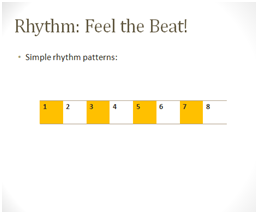In our recent maths lecture we discussed the topic of time and had a discussion concerning the concept of whether time is linear. At the beginning I was not entirely sure what was meant by this statement. What exactly is linear time? I was intrigued to find out more about this topic and decided to follow it up with some research.
Linear time is when “time flows like a conveyer belt that moves horizontally from past to present to future at the same unchangeable speed for all of us” which is produced by Hall (1983, cited in Randall, 1996). Getting back to the question at hand of whether time is linear, the influence of the media needs to be considered. Movies and TV Shows like to think that time is not liner! Back to the Future, Bill and Ted’s Excellent Adventure and Doctor Who have machines that travel through time and defy this rule of linear time. I will never give up the hope of time travel becoming a reality, Never!
Anyway, time is quite an important aspect of everyday life. How would the world cope without time? What about timetables that control school days and university lectures? Maths is clearly involved with timetables, such as the number of classes being held in Dalhousi e, the number of courses per day and how many people can fit in one room/lecture theatre. Personally, I never considered the fact that time was heavily involved with the creation of timetables.
e, the number of courses per day and how many people can fit in one room/lecture theatre. Personally, I never considered the fact that time was heavily involved with the creation of timetables.
How did the world cope without time before clocks were created? Before mechanical clocks there were sundials. This was the earliest form of timekeeping (The Editors of Encyclopaedia Britannica, No Date) and time was shown by the movement of the sun. There are different types of sundials: “equatorial, a horizontal, and a vertical sundial” (Ling and Yee, 2000/2001). The picture above is a horizontal sundial. The ‘gnomon’ is the central part of the sundial. The ‘style’ is the slopped part of the gnomon, this part of the dial casts the shadow and indicates what time of day it is. This particular sundial has Roman Numerals which is a number system that was used and is still used to this day.
I would consider the fundamental mathematics of the sundial to be position, movements and angles. The position of the sun moves on the sundial throughout the day as the Earth orbits the Moon. Also the way in which the shadow is cast by the gnomon and style is determined using angles. There is also mathematics used when creating a sundial. The North American Sundial Society (2011) have a webpage that explains how to calculate dial lines on a sundial.
“The formula for calculating the hours on a horizontal sundial is: tan(theta) = tan(HA) x sin(lat)
Theta = the resulting dial hour angle measured from the noon line (- is left of the noon line, + is right of the noon line)
HA = the hour angle of the sun from the noon meridian, expressed in (+/-) degrees. The hours are minus in the morning and positive in the afternoon.
lat = sundial site latitude, in degrees.” North American Sundial Society (2011).
This has shown me that mathematics is crucial to the working of time. Looking at everyday time keeping such as 1 minute = 60 seconds and 1 hour = 60 minutes contains the simplest mathematics. I have never thought about looking into the way time was originally found until now. It has been a very interesting topic to research and I think I will be able to use this information within my practice. In the early years it would be useful for the children to speak about the basics of time and even making comparisons about how time was recorded and how it is recorded now. This would be making use of not only mathematics but history too. Activities such as making sundials with the upper school includes mathematics and technology. I believe that during this elective I have explored mathematics further and I am now feeling a little bit more confident with teaching it in the primary classroom. Introducing strategies that I have learned from maths lectures and also from my own research I will provide exciting and motivating maths lessons.
References
Lambert, T. (2012) A Brief History of Clocks and Calendars. Available at: http://www.localhistories.org/clocks.html (Accessed: 17 November 2015).
Ling, L.H. and Yee, L.S. (2000/2001) The Mathematics of Sundials. Available at: http://www.math.nus.edu.sg/aslaksen/projects/sundials/ (Accessed: 17 November 2015).
North American Sundial Society (2011) Calculating Dial Lines – 1. Available at: http://sundials.org/index.php/teachers-corner/sundial-mathematics (Accessed: 27 November 2015).
Randall, S. (1996)Linear Time – Cultural ‘Norm’. Available at: http://www.manage-time.com/linear.html (Accessed: 17 November 2015).
The Editors of Encyclopaedia Britannica (No Date) Sundial: Timekeeping Device. Available at: http://www.britannica.com/technology/sundial (Accessed: 17 November 2015).

 th children about the distances between the planets and the scale size of each planet will not only allow children to extend their knowledge of the solar system but also encourage their mathematical thinking skills.
th children about the distances between the planets and the scale size of each planet will not only allow children to extend their knowledge of the solar system but also encourage their mathematical thinking skills. The picture shown below is what we used, the yellow boxes told the class when to clap and the white boxes were to indicate a rest. Anna split us into groups and allowed each group to perform a particular clapping sequence. We then added them all together so that the rhythm over lapped one another.
The picture shown below is what we used, the yellow boxes told the class when to clap and the white boxes were to indicate a rest. Anna split us into groups and allowed each group to perform a particular clapping sequence. We then added them all together so that the rhythm over lapped one another.

